HTML5 example of eye movement effect
This article mainly introduces an example of realizing the eye movement effect on the ofo homepage based on HTML5 gyroscope. It has a certain reference value. Interested friends can refer to it
Recently used the ofo yellow car App When I was browsing, I found that when I swiped the image below, it turned into a minion with moving eyes. I thought it was quite interesting. I used HTML5 to imitate the effect here.
ofo eye effect
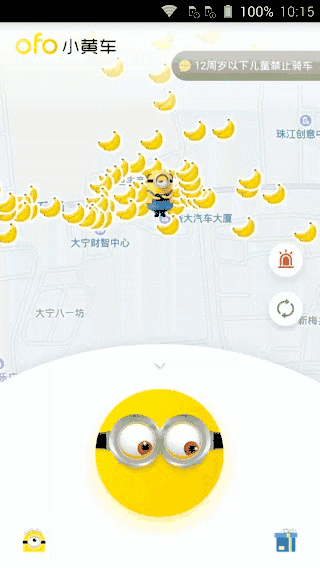
##Effect analysis
It is not difficult to see from the effect that it is achieved using gyroscope events. Let’s first look at some concepts of gyroscope events in HTML5. The gyroscope event isdeviceorientation. Here we mainly get the alpha, beta, gamma in the event.
aplha
The angle of rotation around the Z-axis when the mobile device is placed horizontally, ranging from 0 to 360 degrees.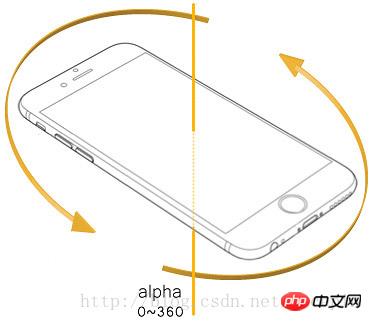
beta
The angle of rotation around the X-axis when the mobile device is placed horizontally, ranging from -180 degrees to 180 degrees.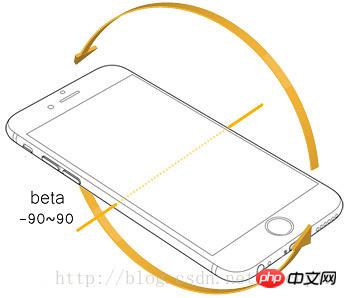
gamma
The angle of rotation around the Z-axis when the mobile device is placed horizontally, the value is -90 degrees to 90 degrees.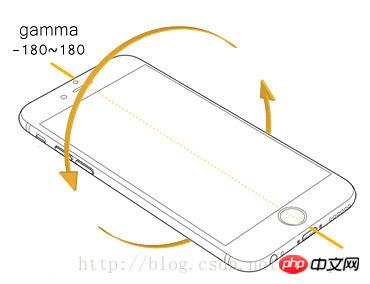
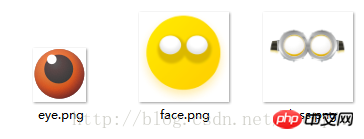
Code implementation
<!DOCTYPE html>
<html lang="en">
<head>
<meta charset="UTF-8">
<meta name="viewport" content="width=device-width, initial-scale=1.0, maximum-scale=1.0, user-scalable=no">
<title>Document</title>
<style>
#box{
position: relative;
width: 300px;
margin: 0 auto;
}
#face{
background-image: url(images/face.png);
background-size: cover;
width: 300px;
height: 300px;
position: absolute;
}
#eyeLeft{
background-image: url(images/eye.png);
background-size: cover;
width: 40px;
height: 40px;
position: absolute;
top: 90px;
left: 100px;
}
#eyeRight{
background-image: url(images/eye.png);
background-size: cover;
width: 40px;
height: 40px;
position: absolute;
top: 90px;
left: 190px;
}
#glass{
background-image: url(images/glass.png);
background-size: cover;
width: 300px;
height: 300px;
position: absolute;
}
</style>
</head>
<body>
<p id="box">
<p id="face"></p>
<p id="eyeLeft"></p>
<p id="eyeRight"></p>
<p id="glass"></p>
<p id="log"></p>
</p>
<script>
'use strict';
/*
* author: 王乐平
* date:2017.7.17
*/
var eyeLeftPosition = {
start: [70, 78],
end: [100, 110]
};
var eyeRightPosition = {
start: [150, 78],
end: [190, 110]
};
var eyeLeftCenterPosition = {
x: (eyeLeftPosition.end[0] - eyeLeftPosition.start[0]) / 2 + eyeLeftPosition.start[0],
y: (eyeLeftPosition.end[1] - eyeLeftPosition.start[1]) / 2 + eyeLeftPosition.start[1]
};
var eyeRightCenterPosition = {
x: (eyeRightPosition.end[0] - eyeRightPosition.start[0]) / 2 + eyeRightPosition.start[0],
y: (eyeRightPosition.end[1] - eyeRightPosition.start[1]) / 2 + eyeRightPosition.start[1]
};
var r = 20;
var eyeLeft = document.querySelector('#eyeLeft');
var eyeRight = document.querySelector('#eyeRight');
if (window.DeviceOrientationEvent) {
window.addEventListener('deviceorientation', function (event) {
let {alpha, beta, gamma} = event;
eyeLeft.style.left = eyeLeftCenterPosition.x + gamma / 90 * r + 'px';
eyeRight.style.left = eyeRightCenterPosition.x + gamma / 90 * r + 'px';
eyeLeft.style.top = eyeRight.style.top
= eyeLeftCenterPosition.y + beta / 180 * r + 'px';
eyeRight.style.transform = eyeLeft.style.transform
= eyeRight.style.WebkitTransform
= eyeLeft.style.WebkitTransform
= 'rotate(' + beta + 'deg)';
}, false);
} else {
document.querySelector('body').innerHTML = '浏览器不支持DeviceOrientationEvent';
}
</script>
</body>
</html>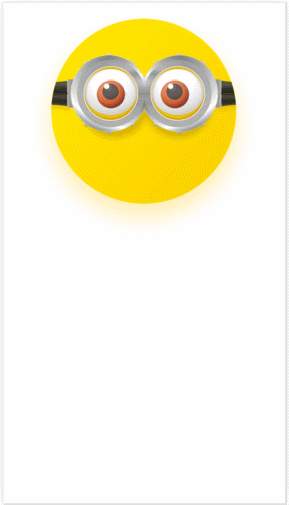
The above is the detailed content of HTML5 example of eye movement effect. For more information, please follow other related articles on the PHP Chinese website!

Hot AI Tools

Undresser.AI Undress
AI-powered app for creating realistic nude photos

AI Clothes Remover
Online AI tool for removing clothes from photos.

Undress AI Tool
Undress images for free

Clothoff.io
AI clothes remover

AI Hentai Generator
Generate AI Hentai for free.

Hot Article

Hot Tools

Notepad++7.3.1
Easy-to-use and free code editor

SublimeText3 Chinese version
Chinese version, very easy to use

Zend Studio 13.0.1
Powerful PHP integrated development environment

Dreamweaver CS6
Visual web development tools

SublimeText3 Mac version
God-level code editing software (SublimeText3)

Hot Topics
 Table Border in HTML
Sep 04, 2024 pm 04:49 PM
Table Border in HTML
Sep 04, 2024 pm 04:49 PM
Guide to Table Border in HTML. Here we discuss multiple ways for defining table-border with examples of the Table Border in HTML.
 Nested Table in HTML
Sep 04, 2024 pm 04:49 PM
Nested Table in HTML
Sep 04, 2024 pm 04:49 PM
This is a guide to Nested Table in HTML. Here we discuss how to create a table within the table along with the respective examples.
 HTML margin-left
Sep 04, 2024 pm 04:48 PM
HTML margin-left
Sep 04, 2024 pm 04:48 PM
Guide to HTML margin-left. Here we discuss a brief overview on HTML margin-left and its Examples along with its Code Implementation.
 HTML Table Layout
Sep 04, 2024 pm 04:54 PM
HTML Table Layout
Sep 04, 2024 pm 04:54 PM
Guide to HTML Table Layout. Here we discuss the Values of HTML Table Layout along with the examples and outputs n detail.
 HTML Ordered List
Sep 04, 2024 pm 04:43 PM
HTML Ordered List
Sep 04, 2024 pm 04:43 PM
Guide to the HTML Ordered List. Here we also discuss introduction of HTML Ordered list and types along with their example respectively
 Moving Text in HTML
Sep 04, 2024 pm 04:45 PM
Moving Text in HTML
Sep 04, 2024 pm 04:45 PM
Guide to Moving Text in HTML. Here we discuss an introduction, how marquee tag work with syntax and examples to implement.
 HTML Input Placeholder
Sep 04, 2024 pm 04:54 PM
HTML Input Placeholder
Sep 04, 2024 pm 04:54 PM
Guide to HTML Input Placeholder. Here we discuss the Examples of HTML Input Placeholder along with the codes and outputs.
 HTML onclick Button
Sep 04, 2024 pm 04:49 PM
HTML onclick Button
Sep 04, 2024 pm 04:49 PM
Guide to HTML onclick Button. Here we discuss their introduction, working, examples and onclick Event in various events respectively.






